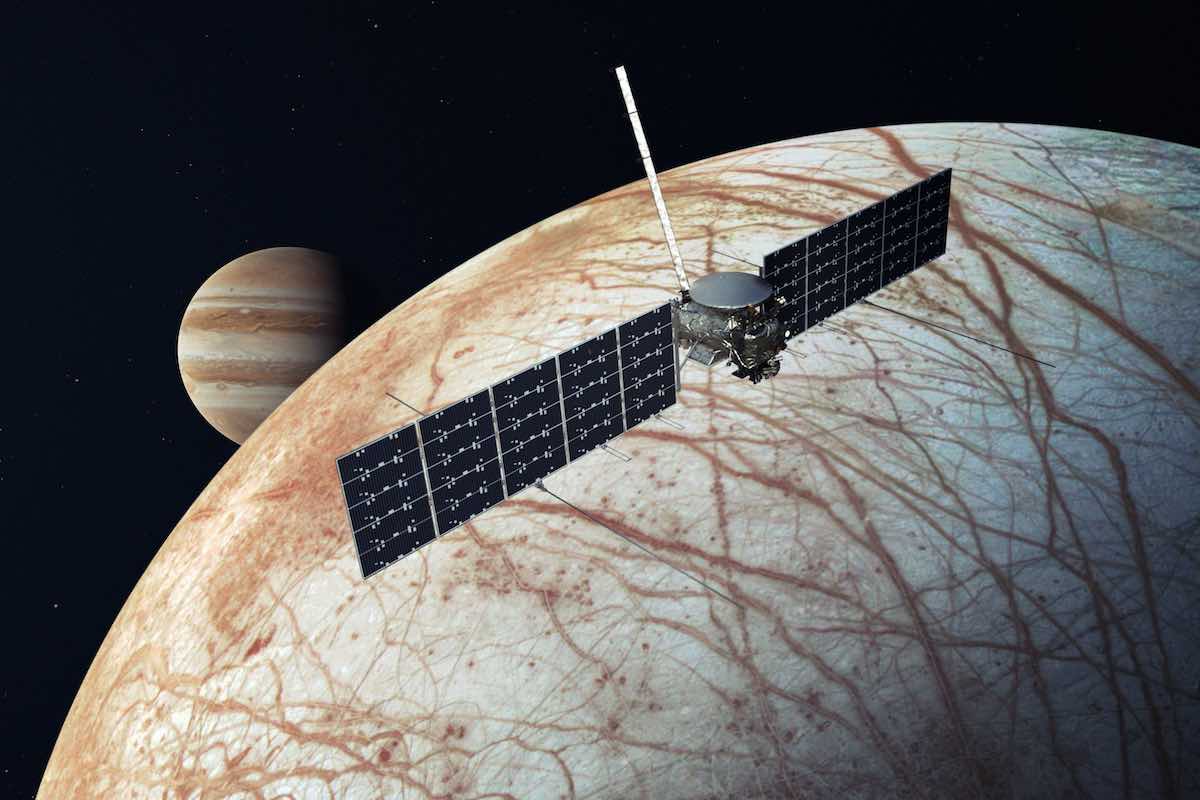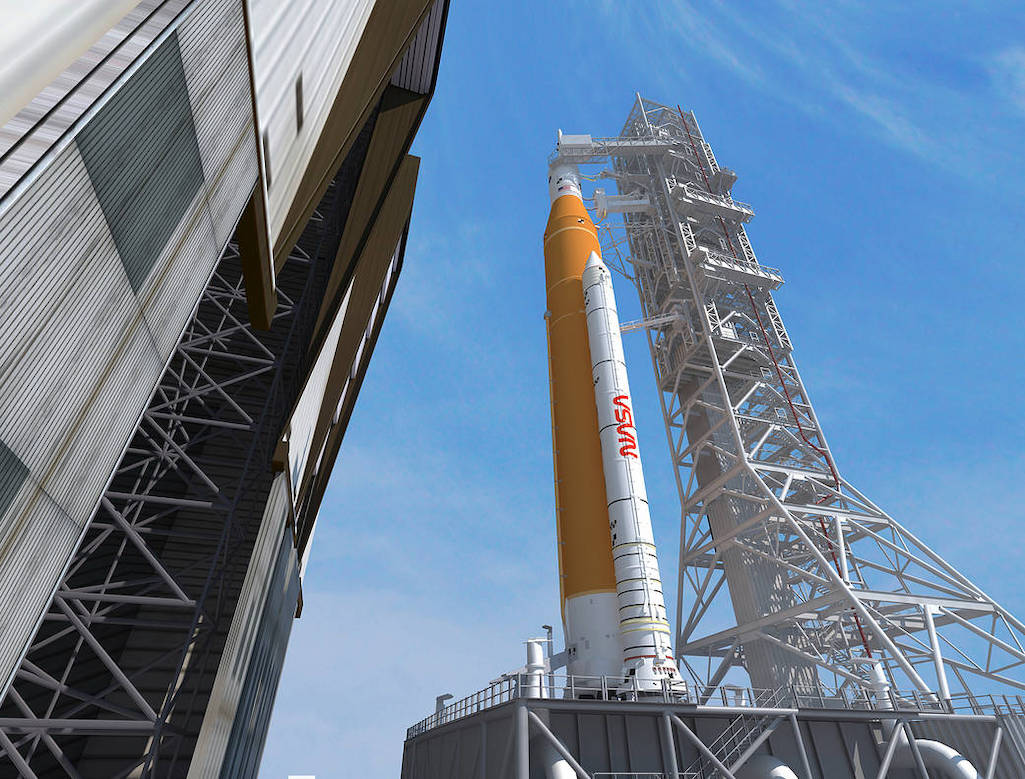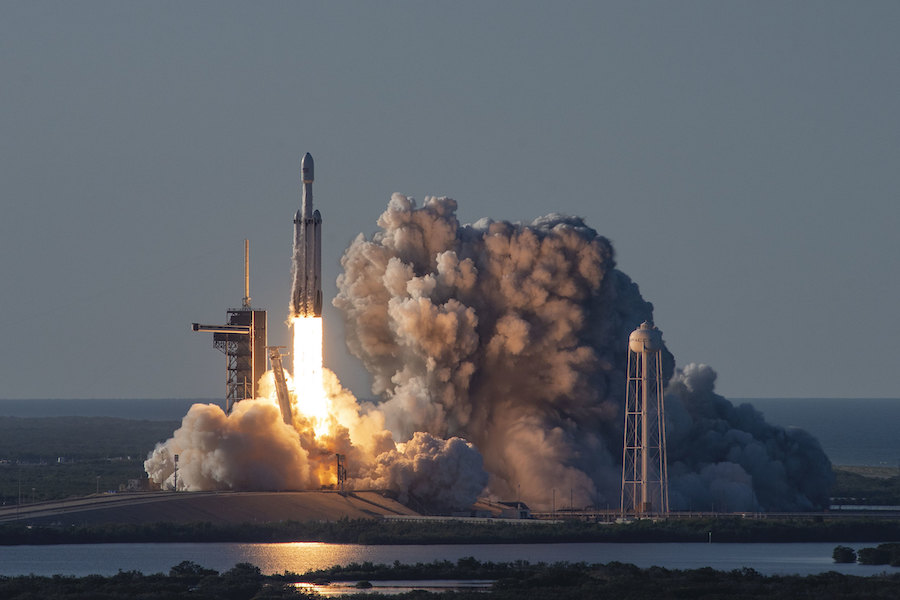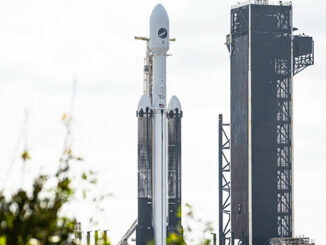
NASA has decided to launch the multibillion-dollar Europa Clipper mission on a commercial heavy-lift rocket in October 2024, and not on the government-owned Space Launch System, officials said Wednesday.
The decision ends a prolonged dilemma for NASA, which until last year was legally required to launch the Europa Clipper mission on the more expensive Space Launch System. The language passed in previous NASA appropriations bills directed NASA to launch the probe on the SLS rocket, but Congress relented in the fiscal year 2021 spending bill passed in December.
Lawmakers gave NASA some flexibility on the launch vehicle decision in the fiscal year 2021 budget, directing the agency to launch Europa Clipper on the Space Launch System only if the rocket is available, and if “if torsional loading analysis has confirmed Clipper’s appropriateness for SLS.”
Europa Clipper managers last year raised concerns about the spacecraft’s compatibility with the Space Launch System due to structural loads the probe will encounter during an SLS launch. NASA officials said last year a Space Launch System rocket would not be available for the Europa Clipper launch until 2025 due to commitments to use SLS rockets on the agency’s Artemis moon missions.
If Europa Clipper was forced to launch on an SLS rocket, NASA would likely have to put the spacecraft into storage to wait for the launcher’s availability, NASA officials said. And an SLS launch would cost up to $1.5 billion more than launching Europa Clipper on a commercial rocket, according to the space agency.
The flexibility provided in the 2021 budget language gave NASA the green light to finally move ahead with a commercial rocket procurement for Europa Clipper.
Bob Pappalardo, Europa Clipper’s project scientist at the Jet Propulsion Laboratory, said Wednesday that NASA managers on Jan. 25 directed the Clipper team to work toward launching the spacecraft on a commercial rocket. Engineers were previously designing the spacecraft to be able to launch on either an SLS or a commercial booster, resulting in extra work and additional costs, and delaying Europa Clipper’s critical design review, a milestone in which the spacecraft’s design is frozen.
“We now have clarity on the launch vehicle path and launch date,” Pappalardo said Wednesday in a meeting of NASA’s Outer Planets Assessment Group. “We’ve received direction in late January from the Planetary Missions Program Office to neck down to a singular launch vehicle path. We received a memo that directs the project to ‘immediately cease efforts to maintain SLS compatibility and move forward with a CLV, a commercial launch vehicle.'”

Launching the Europa Clipper mission on the more powerful Space Launch System would give the spacecraft an extra burst of speed as it departs Earth, enabling a direct trip to Jupiter with a transit time of about two-and-a-half to three years.
With a commercial rocket, like SpaceX’s Falcon Heavy, the spacecraft will have to use gravity assist maneuvers, or flybys, with Mars and Earth to gain enough speed to slingshot into the outer solar system. That will increase the travel time to five-and-a-half years from launch until arrival at Jupiter.
The Europa Clipper mission has a planetary launch window in 2024 that opens Oct. 10 and closes Oct. 30, based on a trajectory calculated by NASA that assumes launch on a commercial rocket. The spacecraft would leave Earth on a course to encounter Mars on Feb. 28, 2025, then return to Earth for a second gravity assist flyby Dec. 2, 2026, putting Clipper on a trajectory to enter orbit around Jupiter on April 11, 2030.
There are backup launch windows available for Europa Clipper in 2025 and 2026, with arrival at Jupiter later in the 2030s.
The longer flight time to Jupiter will add to Europa Clipper’s operations budget, but those costs will be more than offset by the savings from launching on a less expensive commercial rocket.
Jan Chodas, Europa Clipper’s project manager at JPL, said the decision to go with a commercial rocket “certainly helps the team from the standpoint of not having to carry a lot of the dual paths with SLS and a CLV, so there are cost savings there.”
She said there is also an “efficiency gain” for the Europa Clipper team because scientists and engineers can move forward without needing to duplicate work for the SLS and commercial launch alternatives. Chodas said the Launch Services Program at NASA’s Kennedy Space Center in Florida will oversee the launcher procurement effort, resulting in a rocket selection “in about a year or so.”
The Launch Services Program will manage a “full and open competition to select the launch vehicle for Clipper,” said Curt Niebur, NASA’s program scientist for missions to the outer planets. “That competition is starting up.”
NASA released a request for information notice Jan. 26 soliciting responses from U.S.-based commercial launch providers on their capabilities to launch Europa Clipper. The mission is in NASA’s flagship class of interplanetary probes, with a cost commitment of $4.25 billion.

Europa Clipper’s multibillion-dollar cost comes with a requirement to launch the spacecraft on a reliable rocket. NASA said in its Jan. 26 request for information that the launch provider selected for Europa Clipper must accomplish at least three successful flights of the same launch vehicle configuration proposed for Clipper before the mission takes off in October 2024, with at least two consecutive successful launches.
The Europa Clipper spacecraft is expected to weigh more than 13,000 pounds, or at least 6,065 kilograms, with fuel loaded for the journey to Jupiter.
The mass of the spacecraft, coupled with the requirement for a high-speed departure from Earth, means SpaceX’s Falcon Heavy rocket is the only launch vehicle expected to be available in 2024, and also currently operational, that could accommodate the Europa Clipper mission. That likely assumes SpaceX expends the Falcon Heavy’s first stage boosters, devoting all of the rocket’s performance to the launch, and leaving no propellant for recovering the stages.
After entering orbit around Jupiter, Europa Clipper will steer onto a course to make about 45 close flybys with Europa, passing as close as 16 miles, or 25 kilometers, from the icy moon. Fitted with large solar arrays to generate electricity, the spacecraft will take a slightly different path by Europa on each pass, eventually surveying nearly the entire moon with observations from its nine scientific instruments.
Europa is covered in a global ice sheet that cocoons an ocean of liquid water, providing an environment that might be habitable for life. Clipper’s instruments will take high-resolution images and map the composition and topography of Europa’s ice shell. The probe will carry a radar to bounce radio waves off Europa’s interior to determine the thickness and deep structure of the ice sheets, and Clipper will search for evidence of eruptions of water coming through fissures in the ice, which might provide a window into the environment of the liquid ocean below.
Pappalardo said the Europa Clipper mission completed its critical design review in December. The review board identified cost concerns with the mission’s development and operations plans, and the launch vehicle decision as key issues facing the Clipper team. But NASA’s decision to go with a commercial rocket finally alleviates that concern, Pappalardo said.
“The entire project continues to make great technical progress despite COVID-19 impacts,” Pappalardo said.
Email the author.
Follow Stephen Clark on Twitter: @StephenClark1.



